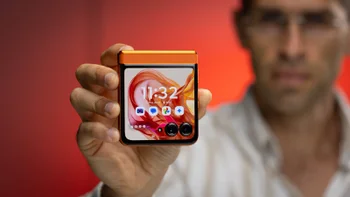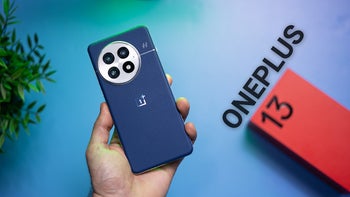Tensor G4 is not built for performance and might have inherited G3's worst problem
We may earn a commission if you make a purchase from the links on this page.

Leaks asked us to temper our expectations for the Tensor G4, the chip that powers the Pixel 9. Google didn't spend a lot of time talking about the chipset during the launch event, which is telling in itself. Post-launch conversations with a trio of Google execs suggest that the leaks were right on the money but that shouldn't necessarily have you worried.
According to a chat between Pixel product manager Soniya Jobanputra and The Financial Express, and an interview of Silicon group product manager Jesse Seed and Google DeepMind product manager Zach Gleicher by Tom's Guide, the Tensor G4 is not designed to deliver chat-busting performance. Instead, it's optimized for use cases specific to the Pixel 9.
We knew that we had a pain point with opening apps. And so as we built G4, we really focused on, okay, what do we need to do to make sure that experience is better for users
Google hasn't revealed what process node the Tensor G4 is based on or how it's configured. Rumors said that the G4 wasn't the company's first choice for the series but it went with it after it realized a fully-custom silicon wouldn't be ready in time for its 2024 phones.
Since the phones haven't been released yet, we don't know how their performance compares to their predecessors, but one area where the chip has improved is the speed at which apps are launched, according to Jobanputra and Seed, with apps launching 17 percent faster. Web performance has also improved by 20 percent. The user interface is also smoother and more responsive.
We are also asked to expect improvements in other areas too as the chip features a better CPU and is also more efficient.
When asked about gaming performance, Seed said that both peak and sustained performance have improved.
Google is in its AI era, so naturally, it was the centerpiece of the conversation during the Pixel 9 launch. The Pixel team worked with Google's AI-focused DeepMind research lab to optimize it to run Gemini Nano with Multimodality to help the devices better understand text, images and audio. So while it may not be the fastest, it can do cool things such as scouring your gallery for an image you screenshotted but can't seem to find or stitch together different photos.
The Tensor G4's improved TPU allows it to reach an industry-leading peak output rate of 45 tokens/second. Performance for AI models is measured in terms of tokens per second. Tokens are words or sub-words and requests you submit are broken down into tokens so that they can be processed.
Google's Seed also reminds us that the Pixel 9 has more RAM than previous models, which ensures that the AI model is ready to jump in whenever you need it.
The takeaway from these conversations is that Google is fixated on certain use cases and while the Pixel 9 might be ahead of other top phones when it comes to AI, it will be the least performant of the bunch.
Early signs are not promising, with a leak claiming the CPU was throttled to 50 percent of its performance barely two minutes into a stress test. This isn't necessarily proof of poor performance though, as tests like these are designed to push products to their breaking point.
When we are designing the chip, we’re not designing it for speeds and feats. We’re not designing it to beat some specific benchmark that’s out there. We’re designing it to meet our use cases.
Soniya Jobanputra, Pixel Product Manager, August 2024
We are also asked to expect improvements in other areas too as the chip features a better CPU and is also more efficient.
When asked about gaming performance, Seed said that both peak and sustained performance have improved.
Google is in its AI era, so naturally, it was the centerpiece of the conversation during the Pixel 9 launch. The Pixel team worked with Google's AI-focused DeepMind research lab to optimize it to run Gemini Nano with Multimodality to help the devices better understand text, images and audio. So while it may not be the fastest, it can do cool things such as scouring your gallery for an image you screenshotted but can't seem to find or stitch together different photos.
We take that same approach to our TPU (Tensor Processing Unit). We work with the DeepMind team looking at the long range kind of forecast of where the models are going and what kind of models we want to run on device. What size is it? How big is it? How fast do we need to process it? What other elements of the chip are going to prevent it from running faster, like memory bandwidth really comes into play when we are designing for these use cases that are using these Gemini on-device models. So we take all of that into account when we are building and designing our chips.
Soniya Jobanputra, Pixel Product Manager, August 2024
I think the biggest innovation that we made this year was being the first silicon and the first phone to run Gemini Nano with multi-modality. And that unlocks some very cool use cases, one of which is Pixel Screenshots. That's very handy if you're trying to remember things.
Jesse Seed, Silicon group product manager, August 2024
Google's Seed also reminds us that the Pixel 9 has more RAM than previous models, which ensures that the AI model is ready to jump in whenever you need it.
The takeaway from these conversations is that Google is fixated on certain use cases and while the Pixel 9 might be ahead of other top phones when it comes to AI, it will be the least performant of the bunch.
Early signs are not promising, with a leak claiming the CPU was throttled to 50 percent of its performance barely two minutes into a stress test. This isn't necessarily proof of poor performance though, as tests like these are designed to push products to their breaking point.
Regardless, overheating has always been a problem with Pixel phones and it would be a shame if it persisted in the new series.
Follow us on Google News













Things that are NOT allowed:
To help keep our community safe and free from spam, we apply temporary limits to newly created accounts: